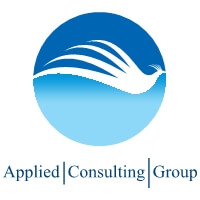While it was not the first hacked organization to acquiesce to attackers’ demands, the California hospital that paid $17,000 in ransom to hackers to regain control of its computer system was unusual in one notable way: It went public with the news.
Hollywood Presbyterian Medical Center relented to the demands, President Allen Stefanek said, because he believed it was the “quickest and most efficient way” to free the Los Angeles hospital’s network, which was paralyzed for about 10 days.
That announcement sparked fears Thursday among hospitals and security experts that it would embolden hackers to launch more “ransomware” attacks and calls in California for tougher laws.
“It’s no different than if they took all the patients and held them in one room at gunpoint,” said California State Senator Robert Hertzberg, who on Thursday introduced legislation to make a ransomware attack equivalent to extortion and punishable by up to four years in prison.
Usually embarrassment and a desire to discourage hackers keep attacked companies quiet. Hollywood Presbyterian did not say why it made the disclosure, but its hand may have been forced by spreading rumors a week after the hack. Stefanek confirmed the cyber attack after at least one doctor appeared to have told local media.
In addition, he disputed media reports the 434-bed hospital had faced a ransom demand of $3.4 million, far more than the amount paid in the hard-to-trace cyber-currency bitcoin.
In a ransomware attack, hackers infect PCs with malicious software that encrypts valuable files so they are inaccessible, then offer to unlock the data only if the victim pays a ransom.
The hack at Hollywood Presbyterian forced doctors to use pen and paper in an age of computerization. News reports said its fax lines were jammed because normal e-mail communication was unavailable, and some emergency patients had to be diverted to other hospitals.
Investigators said administrators were so alarmed that they may have paid ransom first and called police later.
Medical facilities in the area plan to consult cyber security experts on how to protect themselves, the Hospital Association of Southern California said. “Hospitals are certainly now aware of ransomware more than they ever were before, and this has become a very real threat,” said spokeswoman Jennifer Bayer.
Some experts said ransomware encryption can be so hard to crack that victims feel they have little choice but to pay if they want their systems back. The hackers’ success could also prompt other hospitals to make quick payments to avoid the disruption and bad publicity Hollywood Presbyterian faced.
“Our number one fear is that this now pretty much opens the door for other people to pay,” said Bob Shaker, a manager at cyber security firm Symantec Corp.
‘CAT AND MOUSE’
He knew of at least 20 other attacks on healthcare facilities in the past year and hundreds more in other industries that had been kept secret.
Some of those put patients at risk and affected infusion pumps that deliver chemotherapy drugs, risking patient overdoses, he said.
Because hackers hide their identities and demand payment in bitcoin, authorities may have to work harder to find them than if they used old-fashioned methods.
But cyber-crime experts say that they can still be traced.
“The public nature of the network does give law enforcement an angle to help defeat them,” said Jonathan Levin, co-founder of Chainalysis, a New York company working with bitcoin users. “But it’s a game of cat and mouse.”
Ransomware is big business for cyber criminals and security professionals. Although ransoms typically are less than the hospital paid, $200 to $10,000, victims of a ransomware known as CryptoWall reported losses over $18 million from April 2014 to June 2015, the FBI said.
Ransomware attacks climbed sharply in 2014, when Symantec observed some 8.8 million cases, more than double the previous year. IBM said that last year more than half of all customer calls reporting cyber attacks involved ransomware.
